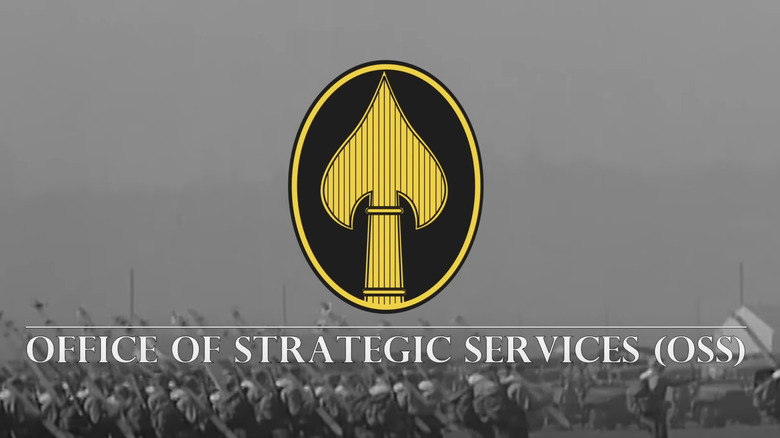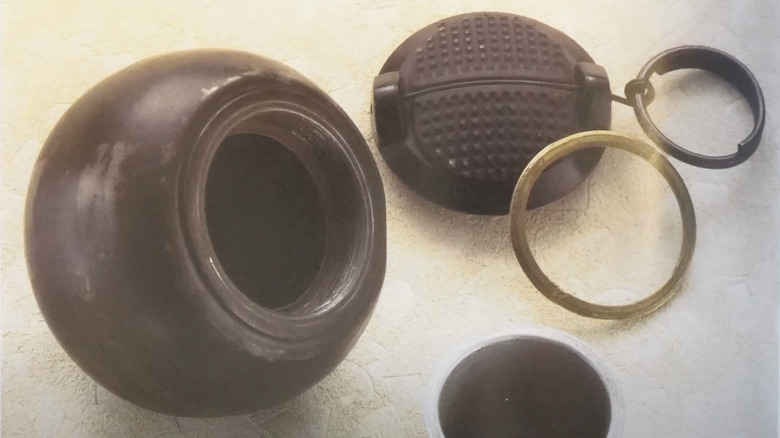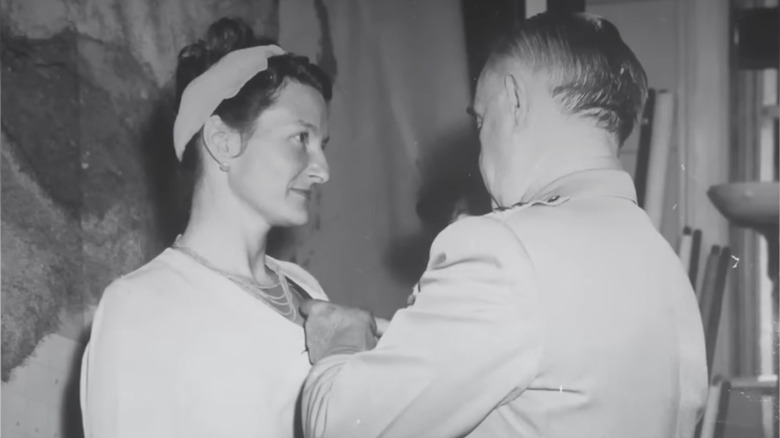What Was The OSS And What Gadgets Did They Use?
July 1940 was a precarious time for Europe. Hitler's Nazi Germany had invaded and conquered six countries from Poland to Luxembourg and France would be knocked out with the signing of an armistice agreement on June 22, 1940. The U.S., though not entering the war until December of 1941, wanted to stay apprised of fast-moving events and they needed someone to be their eyes and ears on the ground. Due to the recommendation of Secretary of the Navy Frank Knox, that man would be WWI veteran, William J. Donovan.
Donovan traveled to Europe and Africa at the request of President Roosevelt who wanted him "to collect and analyze all information ... which may bear upon the national security," according to the CIA Museum. It soon became apparent to the president that a unified system of intelligence gathering and dissemination was needed as multiple agencies from the Navy, Army, and FBI all maintained their own systems but did not interact well with one another.
That answer would first come in the form of the Office of Coordinator of Information (COI) on July 11, 1941. However, the demands and needs of war-time intelligence required a more expanded agency to replace the COI. This expanded organization, also led by William "Wild Bill" Donovan, would incorporate intelligence gathering and covert operations into one centralized agency. Through an Executive and Military Order on June 13, 1942, that agency was born as the Office of Strategic Services, or OSS.
The gadgets used by O.S.S. agents
The Special Operations (SO) branch of the OSS was like the double "0" agents from the world of James Bond. As such, they needed a "Q" to come up with special weapons and gadgets needed to succeed in the field. That man would be the Massachusetts-born inventor, Stanley Lovell. Personally recruited by Donovan, Lovell led the OSS Office of Research & Development (R&D), where he and his team created a plethora of smart tech gadgets straight out of a James Bond movie.
A baseball-inspired hand grenade called the Beano was one of these (and was cousin to another strange army project that turned footballs into grenades). It would kill an adversary with an explosive force of more than twice that of a standard grenade. Explosive flour, referred to as "Aunt Jemima" flour, was also developed to target buildings. Interestingly, to prevent discovery, this flour could be baked and eaten as with any other bread product.
R&D developed other pieces of wild technology spies actually used, including a glove pistol, an umbrella gun, and even a pressure-activate chair that exploded when someone sat down on it. Lovell and his team were prolific innovators. One off their gadgets worked by attaching explosives to bats and then turning these "bat bombs" loose in enemy territory. The team also developed cyanide capsules for captured agents so they would not give up their secrets. And finally, they also developed miniature cameras that could fit in a matchbox.
What did the OSS achieve?
The OSS was only operational for three years when it was dissolved by President Truman in late 1945. At the time, the agency also had four overseas components that were especially critical (and successful) in the European Theater against the Germans and Italians. These included Secret Intelligence (field agents), Special Operations (paramilitary activities), Morale Operations (considered "black propaganda"), and X-2 services (counterintelligence). In its time in operation, the agency grew to include 13,000 personnel, and more than one-third of those employees were women.
Agents within the OSS, including Virginia Hall, were the lynchpin of the agency's success. Hall became the only civilian woman to receive the Distinguished Service Cross for her sustained service in German-controlled territory. Future CIA director Allen W. Dulles would save countless lives as part of Secret Intelligence when he personally negotiated the surrender of German forces in Italy in May 1945. The OSS employed a wide range of persons to accomplish its missions with such names as chef Julia Child, historian Arthur Schlesinger, Jr., film director John Ford, and even Henry and John Ringling North of the famed Ringling Brothers Circus.
Intelligence gathering would continue with the creation of the Central Intelligence Group in 1946 and the Central Intelligence Agency in 1947, but it was the work of the OSS and its dedicated team that created the modern concept of the CIA.


